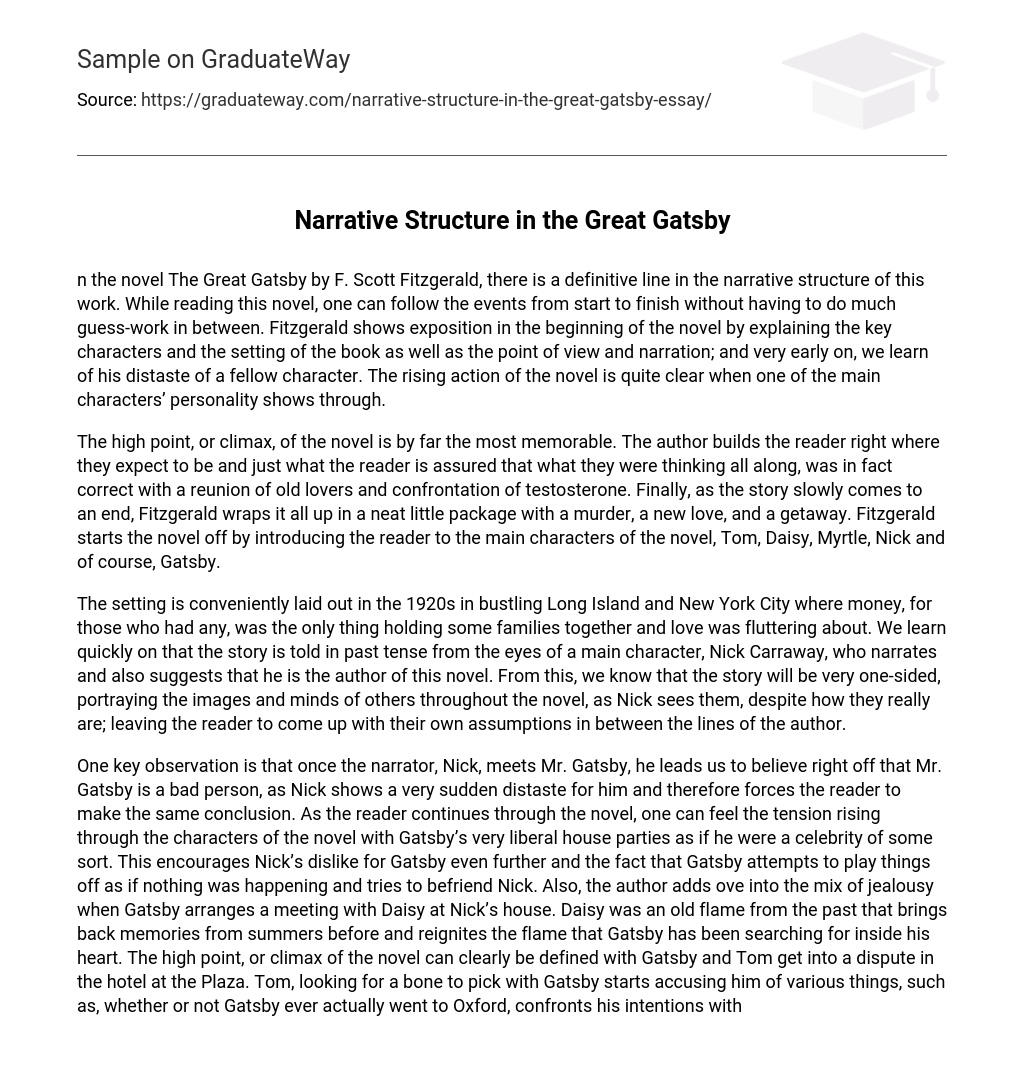The Great Gatsby by F. Scott Fitzgerald is a novel that adheres to a coherent narrative structure, advancing from beginning to end. The initial stage comprises the exposition, where significant characters, setting particulars, and the point of view and narration are introduced. Moreover, the author promptly conveys their aversion towards a specific character. As the plot unfolds, we observe the ascending action when one of the primary characters discloses their authentic nature.
The climax of the novel is the most unforgettable part. The author skillfully creates suspense and validates the reader’s suspicions through a reunion of former lovers and a power struggle confrontation. As the narrative reaches its end, Fitzgerald connects all loose ends with a homicide, a fresh love affair, and an escape. At the start of the book, Fitzgerald presents us to key characters: Tom, Daisy, Myrtle, Nick, and Gatsby.
In the 1920s, money is what bonds certain families in Long Island and New York City, while love fills the air. The narrator, Nick Carraway, not only shares the story from a character’s point of view but also suggests that he is the author of the novel. This implies that his perspective will be biased, presenting others as Nick perceives them rather than showing their genuine selves. As a result, readers must construct their own understandings by inferring meanings hidden within the author’s words.
One significant observation is that when the narrator, Nick, meets Mr. Gatsby, he immediately implies that Mr. Gatsby is a negative person, which influences the reader to have the same opinion. Throughout the novel, tension builds among the characters due to Gatsby’s lavish parties, making him seem like a celebrity. This intensifies Nick’s dislike for Gatsby, especially when Gatsby tries to act as if everything is normal and befriend Nick. The author also introduces jealousy when Gatsby arranges a meeting with Daisy, his former love interest, at Nick’s house. This reunion brings back memories and reignites Gatsby’s longing for Daisy. The turning point of the novel is when Gatsby and Tom have a confrontation at the Plaza hotel. Tom picks fights with Gatsby, questioning his educational background at Oxford and accusing him of using Daisy for personal gain. Tom also blames Gatsby for organizing illegal activities in Long Island.
The plot becomes more complex when Gatsby declares his love for Daisy over Tom’s. Fitzgerald effectively concludes his novel by tying up all loose ends. Daisy refuses Gatsby’s advances and reverts back to Tom and their daughter. Myrtle meets her demise when Daisy unintentionally runs her over with a car. Interestingly, Gatsby takes the blame to protect Daisy from facing consequences. Consequently, the story’s resolution commences with Gatsby’s murder.
Tom invents another falsehood about Gatsby being involved with Myrtle, a claim he believes explains her death. To protect others from harm, he ultimately kills Gatsby. Despite his dislike for Gatsby, Nick holds a funeral for him and starts anew with Jordan in the mid-west. In summary, F. Scott Fitzgerald strictly adheres to the narrative structure in The Great Gatsby by utilizing exposition, rising action, climax, falling point, and resolution to guide his characters through the story. Each narrative element serves as a building block for what will occur next in the characters’ lives.





